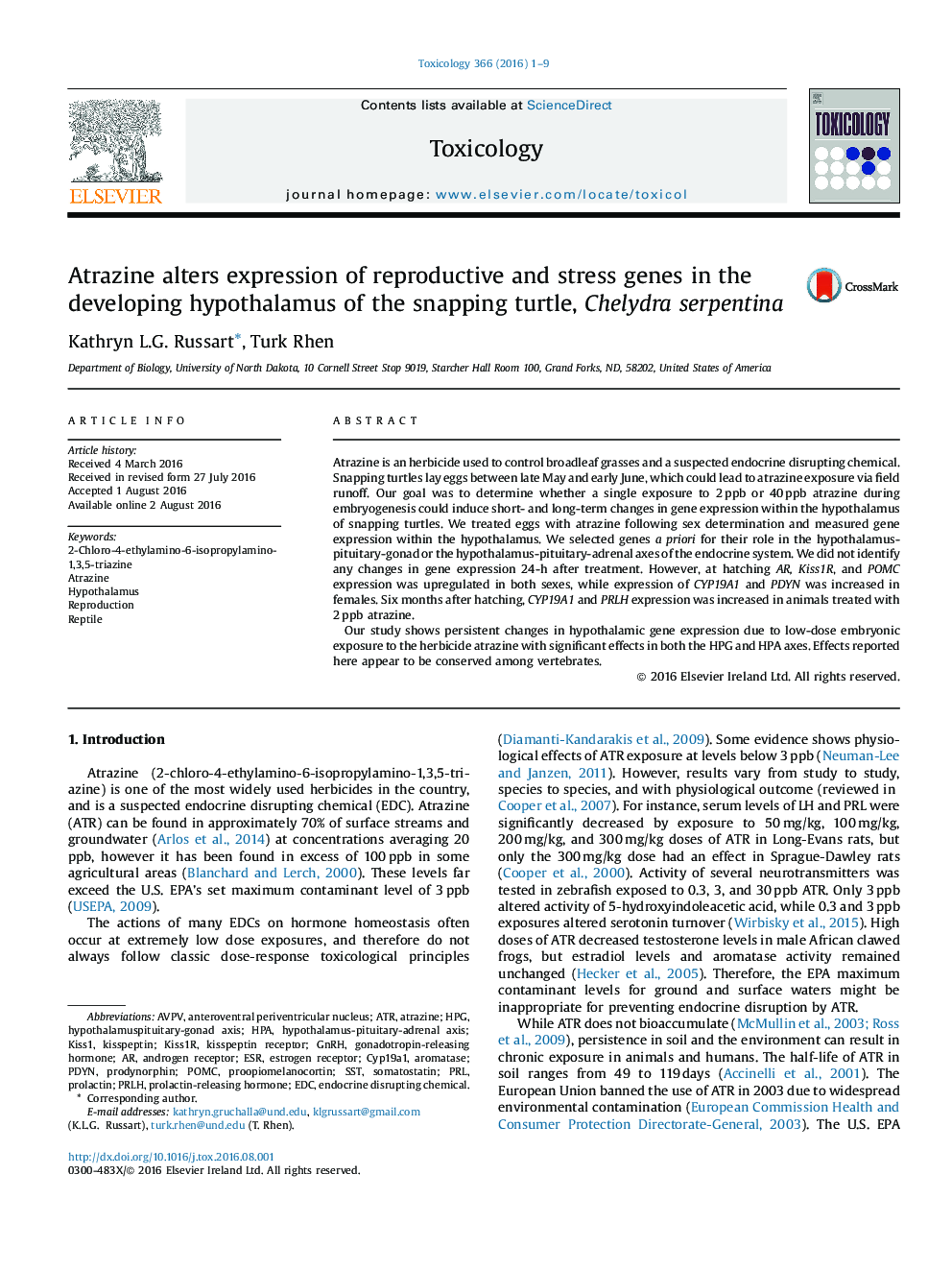| Article ID | Journal | Published Year | Pages | File Type |
|---|---|---|---|---|
| 2595394 | Toxicology | 2016 | 9 Pages |
Atrazine is an herbicide used to control broadleaf grasses and a suspected endocrine disrupting chemical. Snapping turtles lay eggs between late May and early June, which could lead to atrazine exposure via field runoff. Our goal was to determine whether a single exposure to 2 ppb or 40 ppb atrazine during embryogenesis could induce short- and long-term changes in gene expression within the hypothalamus of snapping turtles. We treated eggs with atrazine following sex determination and measured gene expression within the hypothalamus. We selected genes a priori for their role in the hypothalamus-pituitary-gonad or the hypothalamus-pituitary-adrenal axes of the endocrine system. We did not identify any changes in gene expression 24-h after treatment. However, at hatching AR, Kiss1R, and POMC expression was upregulated in both sexes, while expression of CYP19A1 and PDYN was increased in females. Six months after hatching, CYP19A1 and PRLH expression was increased in animals treated with 2 ppb atrazine.Our study shows persistent changes in hypothalamic gene expression due to low-dose embryonic exposure to the herbicide atrazine with significant effects in both the HPG and HPA axes. Effects reported here appear to be conserved among vertebrates.
